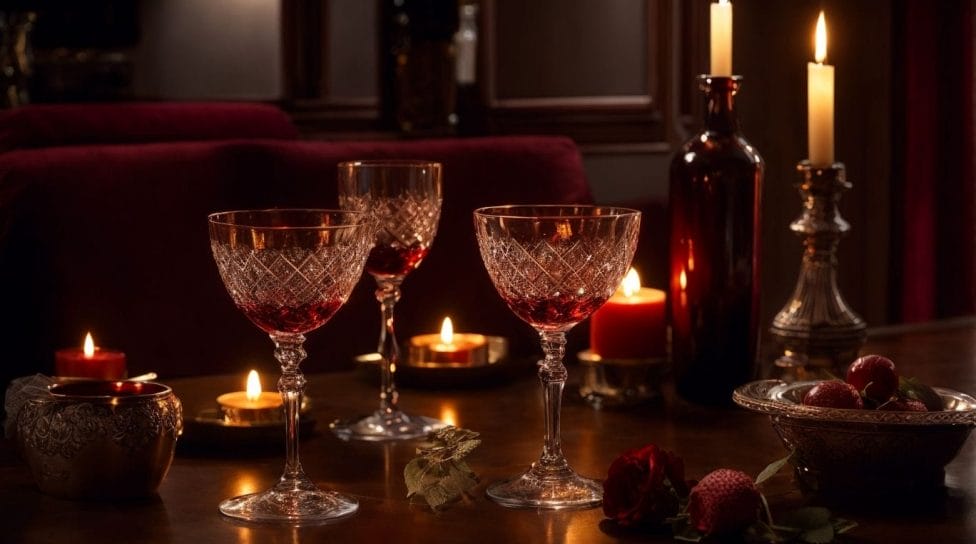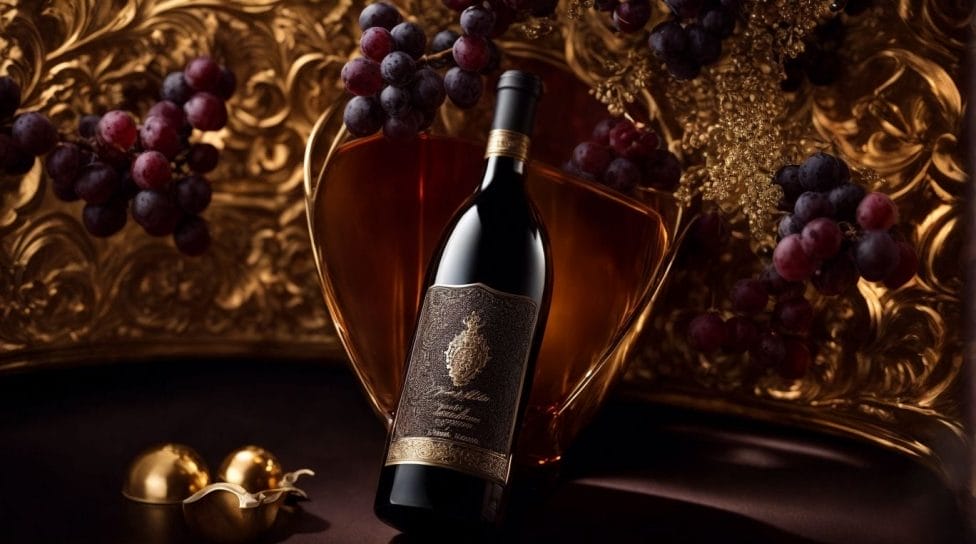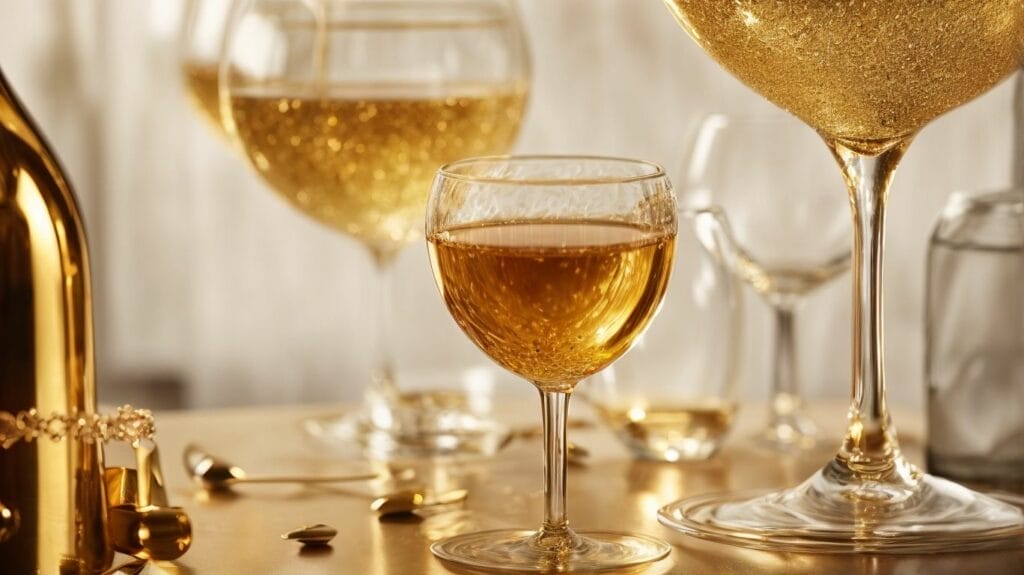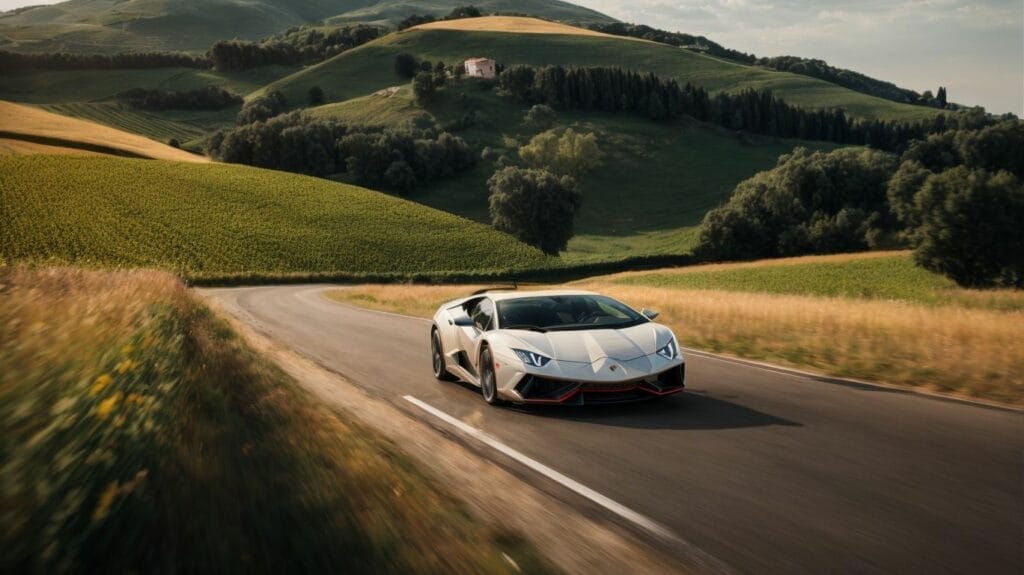Wine is often associated with luxury and indulgence, and some bottles can fetch incredibly high prices. But what exactly makes a wine expensive? A variety of factors, including rarity, reputation, vintage year, production methods, and packaging and marketing, influence the price of wine. Understanding these factors can give us insight into the world of expensive wines.
When it comes to wine, rarity is a key factor in its price. Wines that are produced in limited quantities or from rare, highly sought after grapes will naturally demand a higher price. Additionally, the reputation of the producer can significantly impact the price of a wine. Wines from renowned producers with a history of producing high-quality wines can have a premium price tag.
The vintage year of a wine can also contribute to its price. Wines from exceptional years with ideal weather conditions for grape growing are often more expensive due to their higher quality. The production method can also influence the price, with wines made using labor-intensive processes or aged for longer periods often having a higher cost. Lastly, the packaging and marketing of a wine can also add to its price, as luxurious packaging and effective marketing strategies can increase the perceived value of the wine.
So, what is the most expensive wine in the world? It is the Château Margaux 1787, which was sold for a whopping $225,000 in 1985. Other expensive wines worth mentioning include the Screaming Eagle Cabernet 1992, Penfolds Grange Hermitage 1951, Domaine de la Romanée-Conti Romanée-Conti Grand Cru 1945, and Château Lafite 1787.
In recent years, other expensive wines have entered the market, such as Château Cheval Blanc 1947, Krug Clos d’Ambonnay 1995, Domaine Leroy Musigny Grand Cru 1990, Domaine Georges & Christophe Roumier Musigny Grand Cru 1990, and Egon Müller Scharzhofberger Trockenbeerenauslese 1976, all with prices ranging from $20,000 to $300,000 per bottle. With the ever-growing demand for luxury goods, the prices of expensive wines are only expected to increase in the future.
Key Takeaways:
- Rarity, producer reputation, vintage year, production method, and packaging all contribute to a wine’s price tag.
- The most expensive wines in the world include Château Margaux 1787, Screaming Eagle Cabernet 1992, and Penfolds Grange Hermitage 1951.
- Other notable expensive wines include Château Cheval Blanc 1947, Krug Clos d’Ambonnay 1995, and Domaine Leroy Musigny Grand Cru 1990.
What Makes a Wine Expensive?

Photo Credits: Jetsetlegion.Com by Donald Taylor
Several factors contribute to the high cost of wine, including production methods, rarity, vineyard location, grape variety, and aging process.
- Production Methods: Wines made using labor-intensive techniques, such as hand harvesting and oak barrel aging, tend to be more expensive.
- Rarity: Limited production, small vineyard size, and low grape yields can drive up the price of a wine.
- Vineyard Location: Wines from prestigious wine regions like Bordeaux or Napa Valley command higher prices due to their reputation and terroir.
- Grape Variety: Certain grape varieties, like Cabernet Sauvignon or Pinot Noir, are associated with high-quality wines that come with a higher price tag.
- Aging Process: Wines that undergo extended aging in cellars before release often have a higher price point due to the additional time and storage costs.
What Are the Factors That Influence the Price of Wine?

Photo Credits: Jetsetlegion.Com by John Nelson
When it comes to wine, the price can vary greatly from a few dollars to thousands of dollars per bottle. But what exactly determines the high price tag of some wines? In this section, we will discuss the various factors that influence the cost of wine. From the rarity of the wine and the reputation of the producer to the vintage year and production method and even the packaging and marketing – each of these elements plays a role in the final price of a bottle of wine.
1. Rarity of the Wine
- Production quantity: The rarer the wine, the fewer bottles are produced. This leads to higher demand and prices.
- Grape variety: Wines made from rare or unique grape varieties are considered more valuable due to their limited availability.
- Terroir: Wines from specific regions with exceptional conditions, such as unique soils or microclimates, are highly sought after.
- Aging potential: Wines that can age gracefully and improve in flavor over time are considered rare and valuable.
- Historical significance: Wines with a rich history or association with famous winemakers or vintages can command high prices due to their rarity.
2. Reputation of the Producer
Reputation plays a significant role in determining the price of wine. Here are the factors that contribute to a producer’s reputation:
- Quality Consistency: Producers known for consistently delivering high-quality wines over the years gain a strong reputation.
- Expertise and Skill: Expert winemakers who possess extensive knowledge and experience are highly regarded in the industry.
- Historical Significance: Producers with a long history of producing exceptional wines that have stood the test of time are esteemed.
- Awards and Accolades: Recognition from prestigious wine competitions and critics can elevate a producer’s reputation.
- Exclusive Production: Producers with limited production and highly sought-after wines create an aura of exclusivity.
These factors contribute to the perceived value and prestige associated with the reputation of the producer, ultimately influencing the price of their wines.
3. Vintage Year
Vintage year is a crucial factor that influences the price of wine. Here are the steps to consider when evaluating the impact of the vintage year:
- Research the climatic conditions during the specific vintage year. Weather patterns, such as temperature and rainfall, greatly affect the quality of grapes and the harvest.
- Consult expert reviews and ratings for the particular vintage year. Critics and wine publications provide insights into the overall quality and aging potential of wines from that year.
- Understand the demand and market trends for wines from that specific vintage year. Some years may be highly sought after due to exceptional quality or historical significance.
- Consider the aging potential of the wine. Certain vintage years have better capabilities for aging, allowing the wine to develop complex flavors and increase in value over time.
- Take into account the reputation of the producer. Winemakers with a history of producing exceptional wines may command higher prices for their wines from specific vintage years.
4. Production Method
The production method greatly impacts the price of wine. Here is a list of steps involved in the production process:
- Grape selection: High-quality grapes are chosen, often hand-picked.
- Fermentation: Grapes are crushed, and the juice is fermented with yeast to convert sugars into alcohol.
- Maturation: The wine is aged in barrels or tanks to develop flavor and complexity.
- Blending: Different wines may be blended to achieve the desired taste profile.
- Bottling: The wine is bottled, often with careful attention to packaging and labeling.
- Aging: Some wines are further aged in the bottle before they are ready for sale.
Each step requires expertise and attention to detail, which contributes to the overall cost of the wine.
5. Packaging and Marketing
Good packaging and marketing play a crucial role in the perception and value of expensive wines. Here are some key steps to consider in packaging and marketing wine:
- Create an appealing and distinctive label design that reflects the wine’s character and target audience.
- Invest in high-quality, elegant packaging materials that enhance the wine’s perceived value.
- Utilize strategic branding and storytelling to engage consumers and create an emotional connection with the product.
- Implement effective marketing campaigns through various channels, such as social media, wine tastings, and collaborations with influencers.
- Offer personalized experiences and premium services, like wine clubs or exclusive events, to foster loyalty and word-of-mouth marketing.
By focusing on these 5. Packaging and Marketing strategies, wine producers can effectively position their products as premium and desirable, ultimately influencing their price and market success.
What Is the Most Expensive Wine in the World?

Photo Credits: Jetsetlegion.Com by John Davis
Wine enthusiasts and collectors strive to obtain the most expensive and coveted bottles, often spending thousands or even millions of dollars. In this section, we will uncover the top five most expensive wines in the world. From the historic Château Margaux 1787 to the rare and highly sought-after Domaine de la Romanée-Conti Romanée-Conti Grand Cru 1945, we will explore the stories and prices behind these prestigious wines. So, let’s raise our glasses and discover the world’s most expensive wines.
1. Château Margaux 1787
- Authenticity: Verify the bottle’s provenance and ensure it matches historical records.
- Condition: Check for signs of proper storage and preservation to maintain the wine’s quality.
- Expert opinion: Consult sommeliers or wine experts to validate the wine’s authenticity and assess its value.
- Market value: Research recent auction prices and sales records to determine the wine’s current market value.
- Investment potential: Consider the wine’s rarity and desirability among collectors for potential investment opportunities.
The infamous Château Margaux 1787 is known not only for its hefty price tag of $225,000 but also for its intriguing history. It is rumored to have been owned by Thomas Jefferson and was part of a collection stolen from a Danish collector, only to be later recovered.
2. Screaming Eagle Cabernet 1992
Screaming Eagle Cabernet 1992 is renowned for its exceptional quality and rarity, making it one of the most expensive wines in the world. This highly sought-after Napa Valley wine is a favorite among collectors and wine enthusiasts. Its steep price is influenced by various factors, such as its limited production, the reputation of the producer, and the vintage year. The 1992 vintage, in particular, is highly prized for its outstanding characteristics and potential for aging.
In 2000, a 6-liter bottle of Screaming Eagle Cabernet 1992 set a record-breaking price of \$500,000 at auction, solidifying its place as one of the most expensive wines ever sold.
3. Penfolds Grange Hermitage 1951
Penfolds Grange Hermitage 1951 is renowned as one of the most expensive and highly sought-after wines in the world, prized for its exceptional quality and rarity. Hailing from the Barossa Valley region in Australia, this red wine is a true gem of the 1951 vintage, which is widely celebrated for its ideal growing conditions. Made primarily from Shiraz grapes, it boasts a rich and complex flavor profile that only improves with age, making it a favorite among wine enthusiasts. Remember, if you ever have the opportunity to sample Penfolds Grange Hermitage 1951, be sure to take your time and savor every sip to appreciate its unique qualities fully.
4. Domaine de la Romanée-Conti Romanée-Conti Grand Cru 1945
Domaine de la Romanée-Conti Romanée-Conti Grand Cru 1945 is renowned as one of the most expensive and coveted wines in the world, thanks to its exceptional quality and rarity. Hailing from Burgundy, France, this wine is highly sought after by both collectors and enthusiasts alike. With only a limited production of a few hundred bottles, its scarcity is a major factor in its high price. The 1945 vintage is particularly prized for its incredible aging potential and complex flavor profile. Collectors are willing to pay a premium for the opportunity to taste this historic and iconic wine.
A pro tip for those investing in expensive wines: it’s always a good idea to consult with a reputable wine expert to ensure authenticity and proper storage conditions for both maximum enjoyment and potential resale value.
5. Château Lafite 1787
Château Lafite 1787 is renowned as one of the most expensive and prestigious wines in the world, valued for its rarity, history, and exceptional quality. This wine was crafted in Bordeaux, France, during the late 18th century, and today, only a limited number of bottles from this vintage remain, contributing to its high price. The wine’s reputation as a symbol of luxury and indulgence also adds to its value, with its rich and complex flavors delighting wine enthusiasts.
For those seeking similarly exquisite options, notable choices include Château Cheval Blanc 1947, Krug Clos d’Ambonnay 1995, and Domaine Leroy Musigny Grand Cru 1990. Please take pleasure in exploring these exceptional wines and savor the luxurious experience they offer.
What Are the Other Expensive Wines Worth Mentioning?

Photo Credits: Jetsetlegion.Com by Dylan Lopez
While the most expensive wine in the world may garner all the attention, several other bottles are worth mentioning for their exceptional value and quality. In this section, we will take a closer look at four other expensive wines that have made their mark in the wine world. From the iconic Château Cheval Blanc 1947 to the rare Krug Clos d’Ambonnay 1995, each of these wines has a unique story and reputation that sets them apart. So, let’s raise our glasses and discover the other expensive wines that are worth knowing about.
1. Château Cheval Blanc 1947
Château Cheval Blanc 1947 is one of the most renowned and valuable wines in the world.
- Origins: Château Cheval Blanc is a prestigious vineyard located in the Bordeaux region of France, renowned for its exceptional quality.
- Vintage year: The 1947 vintage is highly sought after due to its perfect growing conditions, resulting in rich and complex flavors.
- Rarity: Only a limited number of bottles were produced, further increasing its value.
- Age: The wine has had decades to develop and mature, enhancing its depth and character.
- Reputation: Château Cheval Blanc has a long-standing reputation for producing outstanding wines, adding to its allure.
Other notable expensive wines include Krug Clos d’Ambonnay 1995, Domaine Leroy Musigny Grand Cru 1990, and Domaine Georges & Christophe Roumier Musigny Grand Cru 1990.
2. Krug Clos d’Ambonnay 1995
Krug Clos d’Ambonnay 1995 is considered one of the most expensive and highly sought-after wines in the world due to its rarity, exceptional quality, and unique production process. With a limited number of bottles produced, this champagne is highly coveted by wine enthusiasts and collectors alike.
Made exclusively from Pinot Noir grapes from a small walled vineyard in Ambonnay, France, the 1995 vintage is renowned for its richness, complexity, and aging potential. It has received critical acclaim for its intense flavors, fine bubbles, and long-lasting finish. The exclusivity and impeccable craftsmanship of Krug Clos d’Ambonnay contribute to its premium price tag.
3. Domaine Leroy Musigny Grand Cru 1990
Domaine Leroy Musigny Grand Cru 1990 is considered one of the most expensive wines in the world. This highly sought-after wine is produced in the Burgundy region of France and is coveted by collectors and wine enthusiasts alike. Known for its exceptional quality and potential for aging, the 1990 vintage is particularly renowned for its complexity and elegance.
Domaine Leroy, a renowned producer in Burgundy, is known for its meticulous winemaking methods and dedication to expressing the unique terroir of its wines. If you ever have the chance to taste or purchase Domaine Leroy Musigny Grand Cru 1990, it is sure to be an extraordinary and unforgettable experience.
Pro-tip: Enhance the flavors of this wine by pairing it with rich, savory dishes such as roasted duck or truffle risotto.
4. Domaine Georges & Christophe Roumier Musigny Grand Cru 1990
The Domaine Georges & Christophe Roumier Musigny Grand Cru 1990 is a highly renowned and expensive wine. This exquisite wine is known for its exceptional quality and ability to age well. The esteemed Roumier family crafts it in the Musigny vineyard of Burgundy, France. The Musigny Grand Cru appellation is reserved for only the finest wines in the region.
The 1990 vintage is highly sought after due to its ideal growing conditions and resulting flavor profile. With its intricate aromas, decadent flavors, and smooth texture, this wine is a true treasure for both wine enthusiasts and collectors. For those seeking a top-tier wine experience, the Domaine Georges & Christophe Roumier Musigny Grand Cru 1990 is definitely worth considering. Cheers!




